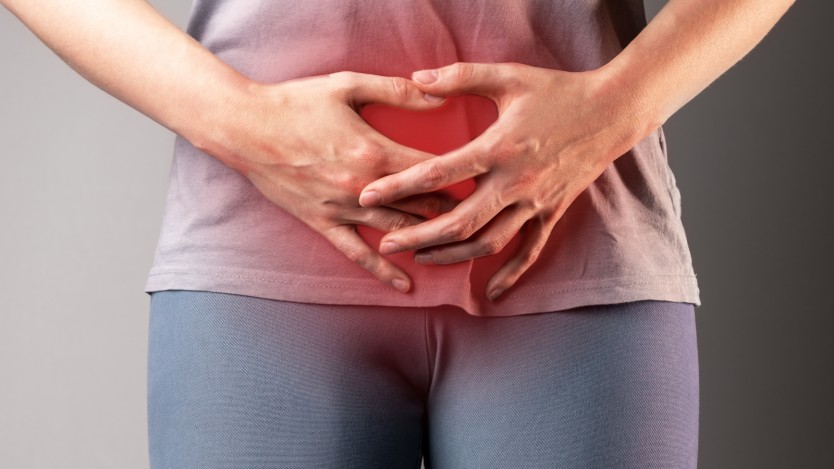Subserosal fibroids

- What are subserosal fibroids?
- Symptoms of subserosal fibroids
- Sizes of subserosal fibroids
- Treatments for subserosal fibroids
- Subserosal fibroids are the type of uterine fibroids that form under the outermost layer of the uterus and grow outwards.
- Subserosal fibroids can develop into pedunculated fibroids when they detach from the uterus and are only attached to it by a thin piece of tissue.
- The definitive treatment for subserosal fibroids is surgery, although you can try to alleviate the symptoms with painkillers.
What are subserosal fibroids?
Uterine fibroids are benign tumour growths that form from the cells that make up the myometrium. In the case of subserosal myomas, they are a type of uterine fibroid that forms under the outermost layer of the uterus, growing towards the outside of the uterus, giving it a bulging shape.

Do you need myomectomy surgery?
Request a free and immediate appointment with our specialists in Gynaecology
In addition, subserosal fibroids can give rise to another type of fibroid called a pedunculated fibroid:
Pedunculated subserosal fibroids
Pedunculated fibroids start out as subserosal fibroids, but over time they become detached from the surface of the uterus until they are only attached to the uterus by a small piece of tissue called a pedicle.
Symptoms of subserosal fibroids
As previously mentioned, subserosal fibroids grow towards the outside of the uterus causing a bulging of the uterus forming nodules. This characteristic feature of subserosal fibroids causes a series of characteristic symptoms, which we explain below:
Heaviness and pain in the pelvic area
This is not an exclusive symptom of subserosal fibroids, as it can also be caused by other uterine fibroids, but it tends to occur mainly in the case of subserosal fibroids due to their growth towards the outside of the uterus.

This symptom does not usually cause serious problems in a woman's day-to-day life, although sometimes there may be quite high peaks of pain and slight discomfort during menstruation.
This increase in size of the uterus as a result of subserosal fibroids implies an increase in the weight of the uterus and over time, when the fibroids have developed sufficiently, they cause the aforementioned sensation of pelvic heaviness for which patients usually go to the doctor.

Do you need myomectomy surgery?
Request a free and immediate appointment with our specialists in Gynaecology
At first, and provided it is not very serious, the doctor will prescribe the patient an analgesic treatment to alleviate the pain. It is important to mention that depending on the size and number of fibroids, the pain and heaviness will be greater or lesser (more fibroids more pain and heaviness, fewer fibroids less pain and heaviness).

Compression of the organs near the uterus
This symptom of subserosal fibroids is usually diagnosed in association with another type of medical problem for which the patient has been seen, such as an increase in urination, alterations in bowel movements such as constipation, gas accumulation and even an enlarged abdomen.
How are these problems related to subserosal fibroids? Due to the outward growth of the uterus carried out by subserosal fibroids, their continued increase in size causes compression of the pelvic cavity organs surrounding the uterus (intestines, bladder, etc.), preventing them from carrying out their functions normally. In many cases, as they become so large, they even cause an increase in the abdominal perimeter.
Sizes of subserosal fibroids
Subserosal fibroids, like the other types of uterine fibroids, can be classified according to their size. This classification will allow the gynaecologist in charge of surgical treatment to choose the most appropriate technique to remove the fibroids.

Do you need myomectomy surgery?
Request a free and immediate appointment with our specialists in Gynaecology
In the case of subserosal fibroids, as with all other types of uterine fibroids, the larger the size, the more severe the symptoms will be:
- Small subserosal myoma: This type of subserosal myoma is the one with a size equal to or smaller than 2 cm in diameter.
- Medium-sized myomas: In this case, the diameter is between 2 and 6 centimetres.
- Large myomas: These are those whose diameter is between 6 and 20 cm.
- Giant subserosal fibroids: These are those whose diameter exceeds 20 centimetres.
Treatments for subserosal fibroids
If subserous fibroids are detected without symptoms, the recommendation is usually to wait and see if the fibroids increase in size or if symptoms start to occur that cause problems in the woman's daily life.
Also, in some cases, if the pain caused by subserosal fibroids is minor and occasional, analgesic treatment is usually chosen to alleviate it.

Do you need myomectomy surgery?
Request a free and immediate appointment with our specialists in Gynaecology
On the other hand, if the subserosal fibroids are large, have severe symptoms and prevent the patient from leading a normal life, the usual indication is surgery to remove the fibroids.
Types of surgical treatment for the removal of fibroids
Normally, when a patient suffers from uterine fibroids, not all of them are subserosal or intramural, but they tend to be of different types. Depending on these variables, size and location, as well as other personal characteristics of the patient, the surgeon will recommend the use of one surgical technique or another.
Below is a list of the different techniques most commonly used for the removal of uterine fibroids:
- Hysterectomy: Hysterectomy is the complete removal of the uterus. This option is usually chosen by patients who have already fulfilled their desire to have children or who are very clear that they do not want to have them. In this case, the myomatous uterus is removed, which can be done through an abdominal approach, a laparoscopic approach or through the vagina.
- Hysteroscopy: Hysteroscopy allows the surgeon to remove uterine fibroids without the need for open surgery. Its use is usually reserved for the removal of smaller fibroids. In addition to surgical hysteroscopy, there are diagnostic hysteroscopies that are used to explore the inside of the uterus and determine which type of technique is appropriate. In the removal of uterine fibroids by hysteroscopy, the entire uterus is preserved.
- Myomectomy:The myomectomy operation to remove uterine fibroids allows the symptoms to be resolved without the need to remove the entire uterus. This technique can be performed through an abdominal incision or laparoscopically. The use of one or the other depends on the surgeon's opinion and the severity and size of the fibroids.
Medical disclaimer: All the published content in Operarme is intended to disseminate reliable medical information to the general public, and is reviewed by healthcare professionals. In any case should this information be used to perform a diagnosis, indicate a treatment, or replace the medical assessment of a professional in a face to face consultation. Find more information in the links below:
